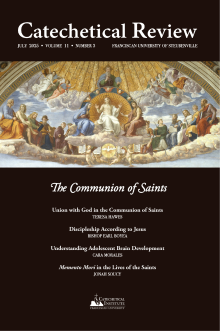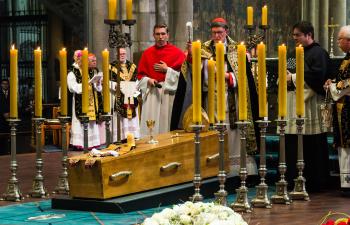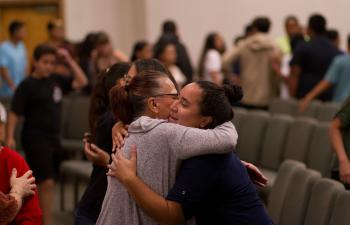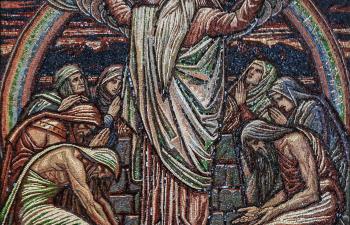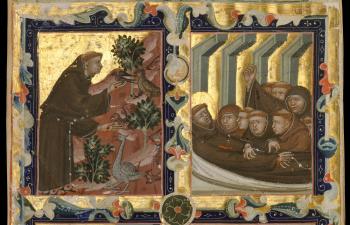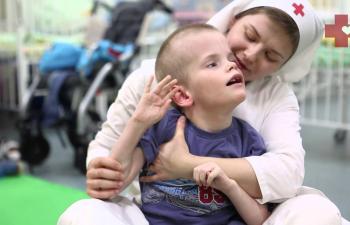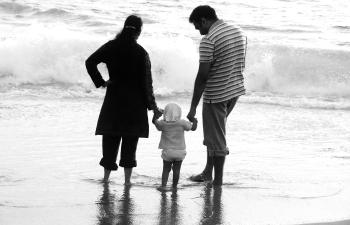 When my wife and I were younger, we would occasionally talk about Family Missions Company. We were fascinated by their model of sending young families to underserved parts of the globe to spread the message of Christ. It is something that we both would have loved to do. However, we also both agreed that it was not where we were being called at that time in our life. Instead, I served as a religion teacher at a Catholic high school near my hometown. Soon, we began to joke that it was pretty much the same thing as Family Missions—we were doing hard work to spread the Gospel to people who seemed to not have heard it before, and we were doing it for pay that really wasn’t sustainable!
When my wife and I were younger, we would occasionally talk about Family Missions Company. We were fascinated by their model of sending young families to underserved parts of the globe to spread the message of Christ. It is something that we both would have loved to do. However, we also both agreed that it was not where we were being called at that time in our life. Instead, I served as a religion teacher at a Catholic high school near my hometown. Soon, we began to joke that it was pretty much the same thing as Family Missions—we were doing hard work to spread the Gospel to people who seemed to not have heard it before, and we were doing it for pay that really wasn’t sustainable!
Of course, as the years have gone by, I certainly acknowledge that the work done in mission fields around the world is very different than teaching in an American Catholic school. But I have also realized that the analogy holds up well in many ways. The work of Catholic education is hard. Many of the students and parents in Catholic schools really are not open to hearing the Gospel. The pay is less than the “market average” when compared to public schools. Clearly, the idea that Catholic schools are like missionary work is not completely unfounded. Now, as a Catholic school principal for over 15 years, I see more clearly that Catholic education is mission work, and, in some particular ways, I have begun to approach it as such.
The rest of this online article is available for current Guild members.
[1] Sherry A. Weddell, Forming Intentional Disciples: The Path to Knowing and Following Jesus (Our Sunday Visitor, 2012), 129.
[2] United States Conference of Catholic Bishops, K-12 Catholic Education, accessed November 18, 2024, https://www.usccb.org/committees/catholic-education/k-12-catholic-education.
[3] Second Vatican Council, Gravissimum educationis, no. 1.
[4] United States Conference of Catholic Bishops, Renewing Our Commitment to Catholic Elementary and Secondary Schools in the Third Millennium (2005), accessed November 20, 2024, https://www.usccb.org/resources/renewing-our-commitment-2005.pdf.
[5] Congregation for Catholic Education, The Catholic School on the Threshold of the Third Millennium (April 27, 1998), accessed November 20, 2024, https://www.vatican.va/roman_curia/congregations/ccatheduc/documents/
rc_con_ccatheduc_doc_27041998_school2000_en.html no. 8.
[6] “The Nation’s Report Card Shows Catholic Schools Excelling Post-Pandemic,” National Catholic Educational Association, accessed November 22, 2024, https://ncea.org/NCEA/NCEA/How_We_Serve/News/Press_Releases/
The_Nation_s_Report_Card_Shows_Catholic_Schools_Excelling_Post-Pandemic.aspx.
[7] Congregation for Catholic Education, Catholic School on the Threshold, no. 19.
Art Credit: Adobe Stock.
This article originally appeared on pages 60 - 65 of the print edition.
This article is from The Catechetical Review (Online Edition ISSN 2379-6324) and may be copied for catechetical purposes only. It may not be reprinted in another published work without the permission of The Catechetical Review by contacting [email protected]

